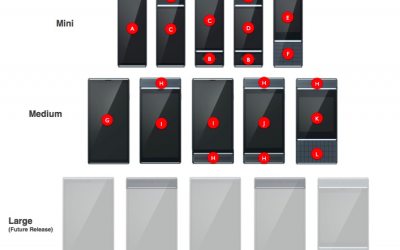Google Releases Project Ara Module Developers Kit

Last month we reported about Google’s Project Ara, which is a framework for creating modular smartphones. The project will include a frame that will hold all the smartphone modules that an user opts for (a display, keyboard, maybe an extra battery, etc.) and users can swap out malfunctioning modules or even upgrade individual modules as innovations emerge. Project ARA was originally started by the Advanced Technologies group which was part of Motorola Mobility, (a subsidiary of Google until Google sold Motorola to Lenovo). Well, Google kept the Advanced Technology and Projects (ATAP) group to work on Project Ara under the Android division of Google. Project Ara was announced last year, on October 29th.
Google just opened a new web page describing the The Module Developers Kit (MDK) which “defines the Ara platform for module developers and provides reference implementations for various design features. The Ara platform consists of an on-device packet-switched data network based on the MIPI UniPro protocol stack, a flexible power bus, and an elegant industrial design that mechanically unites the modules with an endoskeleton“.
Each Ara smartphone is at first a frame that incorporates an electronic backbone that will have all the replaceable modules. All these frames will be made by Google. On this frame, you will be able to install different modules (as mentioned above these modules can be anything from a display, a keyboard, to a new camera). While the frames for Ara smartphones are going to be made by Google, the company intends to let third party devs to make the modules. If you are a developer interested in building modules for Project Ara, you can now do so thanks to the recently released Module Developers Kit (MDK).
The Ara Module Developers Kit consists of a PDF document that describes how to develop modules compatible with the Ara platform. The Ara Module Developers Kit document “extensively describes the endoskeleton, or <
The size is the only part of the Ara smartphone that you won?t be able to change so you will have to choose the frame carefully. The jumbo frame variant will of course allow you to install more modules, though there is no standard regarding the number of modules that you can install on each frame size. The lack of a set number of modules for each frame size, is due to the fact that the number is relative, depending on how the “ribs” and “spine” (the bars that divide the modules) are configured.
The Ara Module Developers Kit is basically a set of guidelines regarding how developers should build the different modules (camera, CPU, GPU etc.). The Module Developers Kit offers a reference design template for each type of module (for example the camera module can be thicker and the Ara Module Developers Kit tells developers just how thick it can be). In the Ara Module Developers Kit, Google mentions modules for WiFi, batteries, chargers, displays, speakers, or a thermal imager; however, developers can design their own innovative modules if they want.
Since Ara smartphone will of course run on Google’s own mobile Operating System, Android, the Ara Module Developers Kit mentions that apps for Ara smartphone should be very similar to usual Android apps. The document also mentions that even though they will be made from many different modules, the final look of an Ara smartphone would be “smooth, flat, pebble form“, which is a good surprise as today’s market requires not just functionality from smartphones, but also a stylish design. As for the modules, they will be very easy to install in Ara smartphones. Google also announced that they will make an online marketplace and will of course offer guides for users on how to install modules on the frame and customize their Ara smartphone.
As mentioned in the Ara Module Developers Kit document, “Throughout 2014, the Project Ara team will be working on a series of alpha and beta MDK releases. We welcome developer input to the MDK: either through the Ara Module Developers mailing list/forum or at one of the series of Developers Conferences. Additionally, if you?d like to create a reference module design, please get in touch”. The first Ara smartphones are expected to be released early next year and the basic model should be available foe $50 and users can upgrade it with whatever they need in order to build their own perfect smartphone. We don’t know about you, but we are very excited about Google’s Porject Ara and we can’t wait to get our hands on an Ara smartphone next year.











